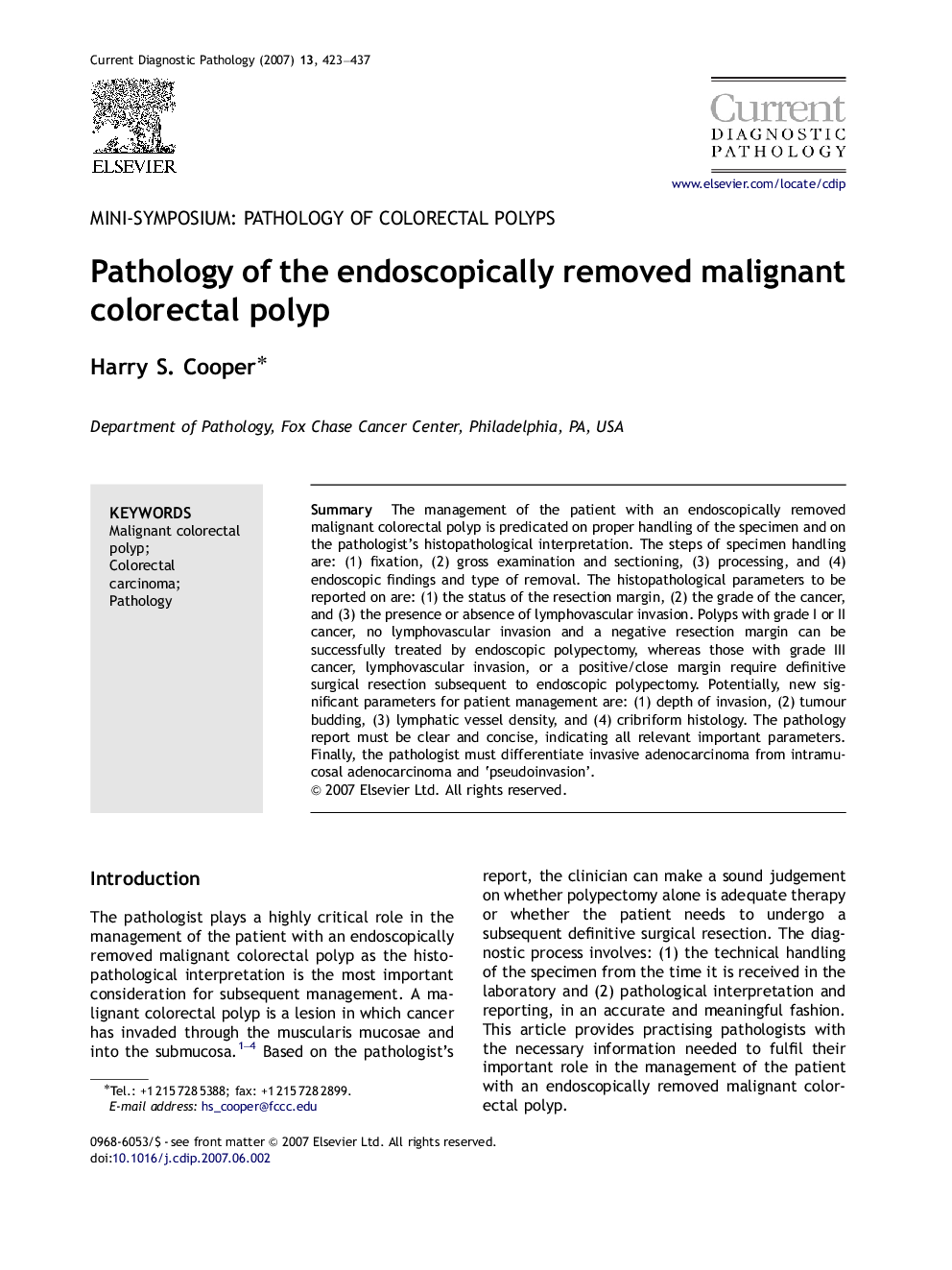| Article ID | Journal | Published Year | Pages | File Type |
|---|---|---|---|---|
| 4130806 | Current Diagnostic Pathology | 2007 | 15 Pages |
SummaryThe management of the patient with an endoscopically removed malignant colorectal polyp is predicated on proper handling of the specimen and on the pathologist's histopathological interpretation. The steps of specimen handling are: (1) fixation, (2) gross examination and sectioning, (3) processing, and (4) endoscopic findings and type of removal. The histopathological parameters to be reported on are: (1) the status of the resection margin, (2) the grade of the cancer, and (3) the presence or absence of lymphovascular invasion. Polyps with grade I or II cancer, no lymphovascular invasion and a negative resection margin can be successfully treated by endoscopic polypectomy, whereas those with grade III cancer, lymphovascular invasion, or a positive/close margin require definitive surgical resection subsequent to endoscopic polypectomy. Potentially, new significant parameters for patient management are: (1) depth of invasion, (2) tumour budding, (3) lymphatic vessel density, and (4) cribriform histology. The pathology report must be clear and concise, indicating all relevant important parameters. Finally, the pathologist must differentiate invasive adenocarcinoma from intramucosal adenocarcinoma and ‘pseudoinvasion’.
